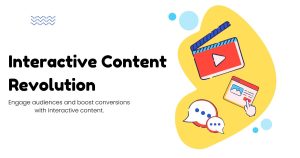Marketing for Fleeting Moments of Joy & Belonging in a Hyper-Distracted World

Our attention spans have shrunk to goldfish-like durations while our hunger for genuine connection has never been stronger. This paradox creates both the greatest challenge and opportunity for modern marketers. We’re competing not just with other brands, but with endless notifications, social media feeds, and the constant buzz of digital stimulation.
The traditional marketing playbook falls short in this environment. Consumers scroll past carefully crafted campaigns without a second glance, immune to conventional persuasion tactics. Yet they’ll stop mid-scroll for a moment that makes them feel truly seen, understood, or delighted in some unexpected way.
Success now depends on creating micro-moments of authentic human experience within the chaos of digital noise. These fleeting instances of joy and belonging cut through distraction barriers that stop other marketing efforts cold.
Understanding the Attention Economy Crisis
Modern consumers exist in a state of perpetual partial attention, constantly switching between devices, platforms, and tasks. Their brains have adapted to expect rapid stimulation changes, making sustained focus on any single message increasingly difficult to achieve.
This fragmented attention creates interesting psychological patterns. People crave depth and meaning but struggle to engage with anything requiring extended mental investment. They want to feel connected to brands and communities but resist obvious attempts at emotional manipulation.
The result is a consumer mindset that’s simultaneously cynical and hopeful. They’ve developed sophisticated filters for detecting inauthentic marketing messages while remaining surprisingly receptive to genuine moments of human connection, even from commercial sources.
The Neuroscience of Micro-Moments
Brief emotional experiences can create lasting memory formation through what neuroscientists call “peak-end bias.” People remember the most intense moment of an experience and how it ended, often more vividly than the duration or other details.
This psychological principle explains why a five-second video can generate more brand affinity than a thirty-minute content piece. The brain prioritizes emotional intensity over information quantity when forming memories and associations.
Surprise plays a crucial role in breaking through attention barriers. When something unexpected occurs within a familiar context, the brain pays heightened attention and encodes the experience more deeply. This neurological response creates opportunities for brands to make memorable impressions within very short timeframes.
Creating Authentic Moments of Belonging
Belonging doesn’t require extensive community building or complex loyalty programs. It can emerge from simple recognition of shared experiences, struggles, or aspirations that resonate with specific audience segments.
The most effective belonging moments acknowledge something true about the audience’s lived experience without trying to solve or capitalize on it immediately. A brand might recognize the exhaustion working parents feel at 3 PM on a Tuesday, not to sell energy drinks, but simply to say “we see you.”
These acknowledgments work because they demonstrate understanding rather than attempting persuasion. When people feel understood, they naturally develop positive associations with the source of that understanding, even in commercial contexts.
Micro-Storytelling in Seconds
Traditional storytelling structures don’t translate well to hyper-distracted environments. Instead, effective micro-stories compress entire emotional journeys into moments brief enough to consume between other activities.
The key lies in starting in the middle of an emotional experience rather than building up to it. Skip the setup and exposition, jumping directly to the moment of recognition, surprise, or delight that creates the desired feeling.
Visual storytelling becomes essential when time is severely constrained. A single image or short video can convey complex emotions and relationships that would require paragraphs of text to explain. The brain processes visual information much faster than written content, making it ideal for micro-moment marketing.
Timing and Context Precision
The same message can create joy or annoyance depending entirely on when and where it appears in someone’s day. Understanding the emotional rhythms of your audience’s daily experience allows for strategic timing that enhances rather than interrupts their natural flow.
Morning commutes, lunch breaks, and evening wind-down periods represent different emotional states and receptivity levels. Content that feels intrusive at 9 AM might feel delightful at 6 PM when people are transitioning from work mode to personal time.
Platform context also affects message reception. Instagram users expect different emotional tones than LinkedIn users, even when they’re the same individuals. Successful micro-moment marketing adapts not just to audience demographics but to platform-specific mindsets and expectations.
Breaking Through Digital Cynicism
Consumer skepticism toward marketing messages has reached unprecedented levels, particularly among younger demographics who’ve grown up with constant commercial messaging. Breaking through this cynicism requires abandoning traditional sales approaches in favor of genuine value creation.
Value in micro-moments rarely comes from product information or promotional offers. Instead, it emerges from entertainment, recognition, inspiration, or simple human acknowledgment that brightens someone’s day without asking for anything in return.
The brands that succeed in this environment practice what marketing experts call “generous marketing” – giving away moments of joy without immediate reciprocal expectations. This approach builds goodwill that translates to business results over time, though not always through direct attribution channels.
Platform-Specific Joy Strategies
Each social platform cultivates different types of attention and emotional engagement. TikTok rewards surprise and entertainment, Instagram favors aspiration and beauty, while Twitter responds to wit and cultural commentary.
Understanding these platform personalities allows marketers to craft moments that feel native to each environment rather than obviously promotional. Content that works perfectly on one platform often falls flat on others, not due to quality differences but because it doesn’t match platform-specific emotional expectations.
Cross-platform adaptation requires more than resizing content or adjusting posting schedules. It demands understanding the unique psychological state users bring to each platform and crafting experiences that complement rather than conflict with those mindsets.
Measuring Fleeting Impact
Traditional marketing metrics often miss the true impact of micro-moment strategies. Engagement rates, click-through percentages, and conversion tracking capture immediate responses but fail to account for longer-term brand affinity changes.
Brand sentiment analysis, share-of-voice improvements, and qualitative feedback provide better indicators of micro-moment effectiveness. These metrics capture emotional impact that might not translate to immediate sales but builds the foundation for future customer relationships.
Memory studies suggest that positive micro-moments create availability bias, making brands more likely to be recalled during relevant purchase decisions weeks or months later. This delayed impact requires patience and sophisticated attribution modeling to measure accurately.
The Role of Authenticity in Momentary Connections
Authenticity in micro-moments means aligning brand actions with stated values, even in brief interactions. Consumers can detect inconsistencies between brand messaging and behavior remarkably quickly, particularly in real-time social media environments.
Authentic moments often involve admitting limitations, sharing behind-the-scenes realities, or acknowledging mistakes rather than presenting polished perfection. Vulnerability creates connection more effectively than competence in many micro-moment contexts.
For brands seeking to master the art of creating genuine emotional connections with their audiences, Emotional Marketo offers specialized strategies and tools designed specifically for navigating the complexities of emotional marketing in today’s attention-challenged landscape.
Building Cumulative Emotional Equity
Individual micro-moments create limited impact, but consistent delivery of small positive experiences accumulates into significant brand equity over time. This cumulative effect requires strategic planning to ensure each moment reinforces rather than conflicts with overall brand positioning.
Emotional consistency across touchpoints becomes crucial when working with brief interactions. A brand personality that feels scattered or contradictory in micro-moments creates confusion rather than connection, even when individual moments might be well-executed.
The most successful brands treat micro-moments as part of a larger emotional architecture, where each brief interaction contributes to a cohesive relationship-building strategy rather than existing as isolated attempts to capture attention.
Future-Proofing Joy in Marketing
As attention spans continue fragmenting and digital noise increases, the ability to create meaningful micro-moments will become even more valuable. Brands that develop this capability now position themselves advantageously for an increasingly distracted future.
Emerging technologies like augmented reality and voice interfaces will create new opportunities for brief meaningful interactions, but the fundamental principles of authenticity, timing, and emotional relevance will remain constant.
The brands that thrive in tomorrow’s attention economy will be those that master the art of compressed storytelling, genuine human connection, and strategic emotional generosity. These skills require practice and refinement but offer sustainable competitive advantages in an increasingly crowded marketplace.
Success in marketing for fleeting moments requires patience, creativity, and a genuine commitment to brightening people’s days without immediate expectations. The brands that approach this challenge with authentic intent to serve rather than sell discover that joy and belonging create business results more effectively than traditional persuasion tactics ever could.





